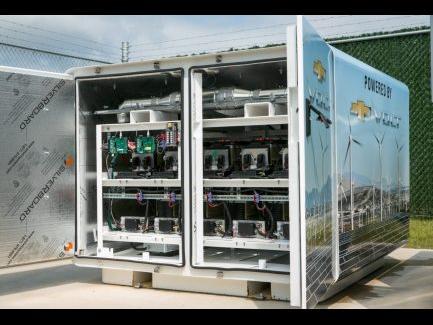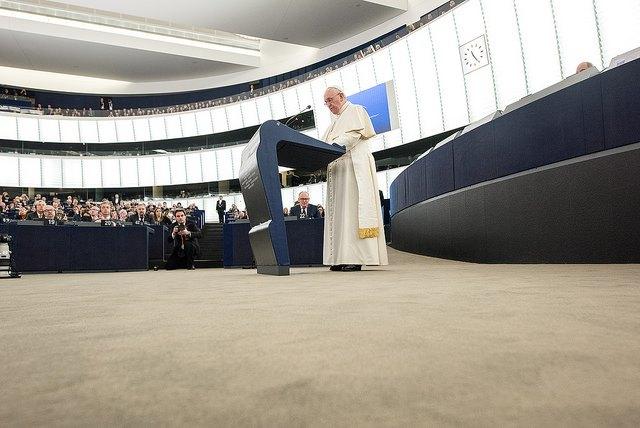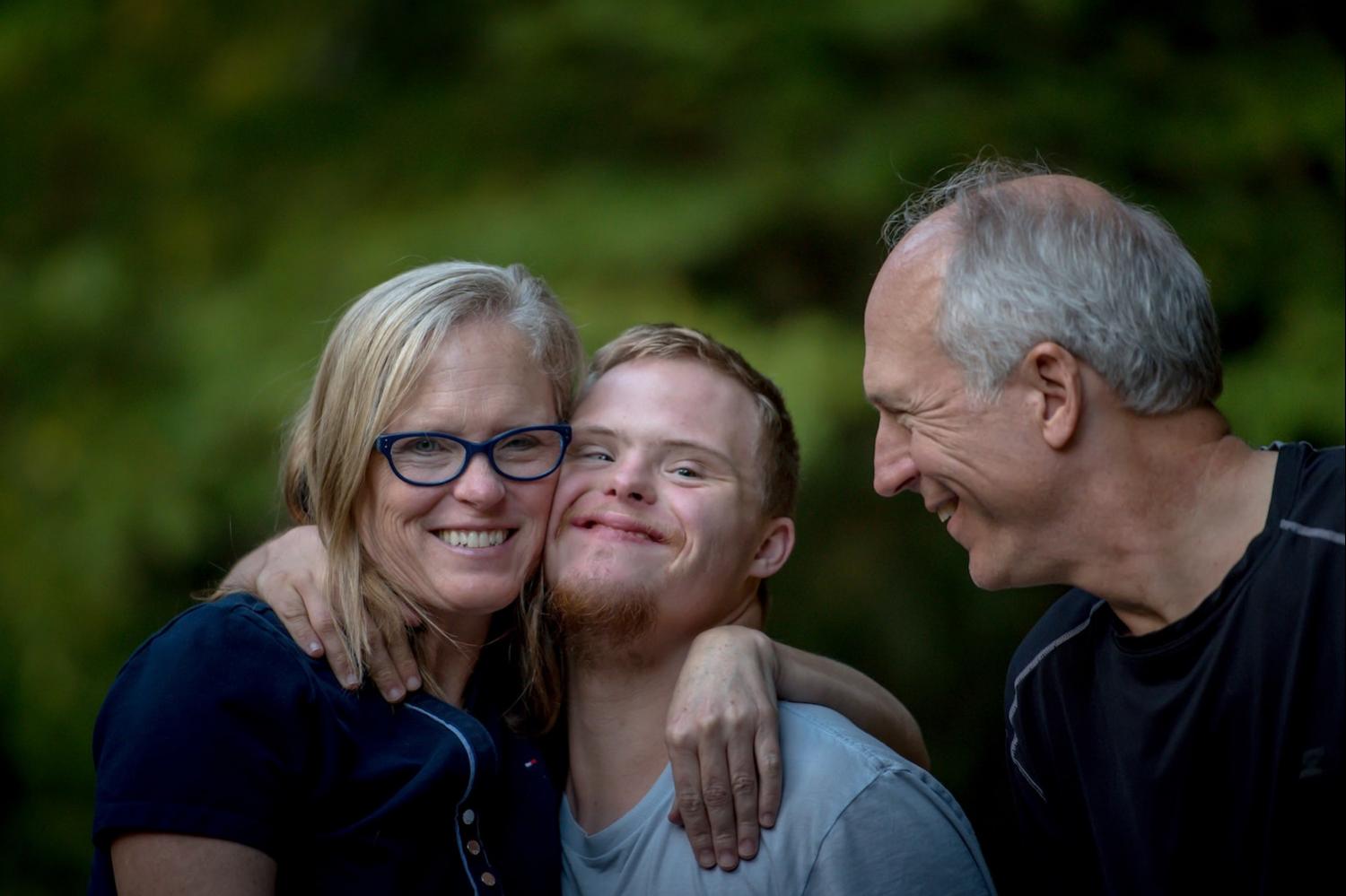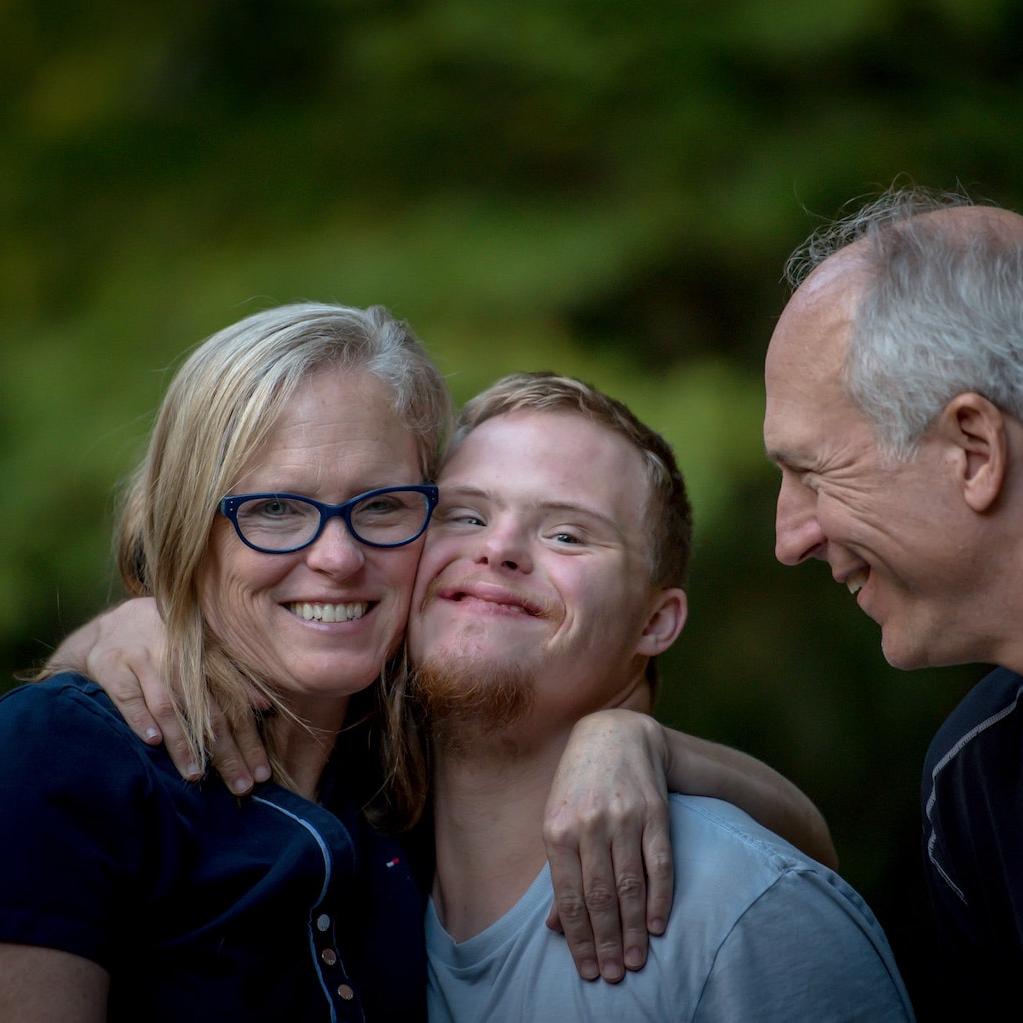Pope Francis Kills 'Energy Poverty' Argument For Fossil Fuels


The leaked copy of a new papal encyclical on climate change and poverty caused quite a stir earlier this week, when the Italian publication L'Esspresso got hold of a draft version and published in full.
In the draft document, titled Laudato Si (Praised Be), Pope Francis meticulously lays out the moral, ethical and religious imperatives for environmental stewardship. In doing so, he's pulled the rug out from under the fossil fuel industry's key argument for its continued existence: saving the world from energy poverty.
When you've lost the Pope, you're on pretty shaky ground. But His Holiness' position on climate change is just the latest in a series of setbacks for the industry.
The "energy poverty" argument for fossil fuels
One of the most vocal proponents of the "energy poverty" argument is ExxonMobil CEO Rex Tillerson, who reportedly summed up the case for fossil fuels during a shareholder meeting in 11 words:"What good is it to save the planet if humanity suffers?"The idea is that only the fossil fuel industry can provide enough energy, at low enough prices, to help developing nations and underserved communities lift themselves out of poverty.
Tanzania provides a good example of that argument at work. Last summer Tanzania articulated a new energy policy that calls for introducing -- yes, introducing -- coal as a major energy source, as well as dramatically increasing its use of natural gas.
The new policy reflects the country's desperation to switch energy gears, partly because an ongoing drought has severely curtailed output from its hydropower plants. Here's the fossil fuel reasoning as explained in an article published by the Breakthrough Institute, a think tank known partly for its advocacy of nuclear energy and natural gas:
"Concerns about the climate are legitimate, but to raise its citizens out of poverty, the energy roadmap has prioritized raising per capita income in Tanzania from $640 to at least $3,000."... Despite facing a direct threat from climate change, Tanzania plans to rely heavily on coal and natural gas for its future energy needs as the country strives to develop its economy."
Pope Francis, poverty and climate change
The leaked draft makes it clear that Pope Francis accepts the science behind climate change. He also knocks the pins out from the energy poverty argument simply by drawing attention to the fact that some of the most economically vulnerable communities in the world are also the ones most vulnerable to the impacts of climate change.Here is a key passage of the draft, connecting climate change and poverty, as cited in the Atlantic:
"In the draft, [Pope Francis] writes that the heaviest impacts of climate change 'will probably fall in the coming decades on developing countries. Many poor people live in areas particularly affected by phenomena related to heating, and their livelihoods strongly depend on natural reserves and so-called ecosystem services, such as agriculture, fisheries and forestry.'”From this perspective, far from providing a leg up to communities in distress, the fossil fuel industry is adding to their already considerable burdens.
That brings us right back around to the situation in Tanzania. Despite the increased interest in fossil fuels, the Tanzanian government does recognize that the loss of hydropower as a reliable energy source is directly linked to climate change:
"In Tanzania, the impacts of climate change are already evident in almost all sectors of the economy and throughout the country," reads the country's 2012 climate strategy."Given that Tanzania’s economic base is dependent on the climate sensitive natural resources, this makes the country’s economy extremely vulnerable to the adverse impacts of climate. Some examples of such impacts include: severe and recurring droughts in recent years which have triggered economically devastating power crisis and massive deaths of livestock ..."
The fossil fuel industry loses another friend
The energy market in sub-Saharan Africa is a juicy target for the fossil fuel industry, but Pope Francis's stance on climate change could provide renewable energy advocates with a powerful grassroots ally in the region.Our friends over at the Atlantic remind us that Africa is one of the two "constituencies" that Pope Francis has focused on (the other is South America). The number of Catholics in Africa is expected to rise dramatically by 2050 as part of a trend toward Christianity in the region.
Keep in mind that there are currently 1.2 billion Roman Catholics in the world, and you can see that the forceful position staked out by Pope Francis creates a real headache for the fossil fuel industry.
Actually, with all due respect, Pope Francis is a little late to the game. The fossil fuel industry is already deep in the process of losing other allies.
The U.S. investment community, for one, is beginning to flee for the exits thanks in part to the efforts of green investor organizations like Ceres and As You Sow. Just this week, the Obama administration pushed things along by announcing that the president's $2 billion goal for private-sector clean energy investment has already been surpassed, leading to a new goal of $4 billion.
Consumers are also attracted to renewable energy. As detailed frequently on this site, that includes manufacturers, retailers and other businesses that are ditching fossil fuels in favor of renewable energy, typically in the form of rooftop or ground-mounted solar installations on their premises. Nonprofits and academic institutions also feature prominently in this trend.
Entire governments are in on the action, too. One example in the U.S is the city of Burlington, Vermont, which recently achieved 100 percent renewable electricity. Earlier this month the state of Hawaii recently assigned itself a 100 percent renewable energy goal as a matter of law, not just aspiration.
It's also worth noting that Germany is in a good position to be the first major country to get 100 percent of its electricity from renewable sources.
None of this is good news for the fossil fuel industry, and the new encyclical is already adding fuel to the fire. The leaked document available as of this writing is an unauthorized draft and not the official version, so it will be interesting to see how the industry and its remaining friends in the U.S. Congress react, once Pope Francis officially provides something to react to.
Image (cropped): Saint Francis Kneeling in Meditation, El Greco 1610, by freeparking via flickr.com, creative commons license.
Spent Chevrolet Volt Batteries to Help Power a GM Data Center


When a Chevrolet Volt battery is used up and can’t power the car any longer, it still has some juice left. That juice can be used to create electricity. Specifically, the juice from five Volt extended-range electric car batteries is being used to help power the new General Motors data center at its Milford Proving Ground in Milford, Michigan.
The Volt draws power from a band of energy in the battery pack, and that leaves a lot of juice left over to be used as electricity. Up to 80 percent of the battery’s storage capacity remains after it is no longer useful in a Volt.
“The Volt batteries are tied to the solar array and wind turbines, storing power during times of generation and powering the facility overnight or when renewable resources are not generating,” Rob Threlkeld, global manager of renewable energy for GM, told TriplePundit.“The power generated by the solar array and wind turbines offsets [all of the power] used by the administration building tied to GM’s new data center in Milford.”
Reusing the batteries to provide stationary power benefits the environment and “addresses two concerns: the intermittency of renewable resources and supporting grid stability,” Threlkeld said. Plus, the growth of distributed generation resources like solar, wind and battery storage, opens "a whole new avenue of revenue stream to projects through ancillary sources,” he added.
The data center already has a 74 kilowatt ground-mount solar array and two 2-kW wind turbines that together generate 100 megawatt hours of electricity. That’s enough to power the office building and lighting for the parking lot, or equivalent to the energy needs used by 12 average households.
The batteries can also be used to provide back-up power to the data center for up to four hours if there is a power outage. They can store the power when it’s not needed. The secondary use of the batteries as a pilot project to better understand how energy is redistributed by them at a larger scale. GM is working with partners to both validate and test systems for other commercial and non-commercial uses.
The combination of generating renewable energy and storing it allows the “building to be net zero, meaning that the total amount of energy used by the building is roughly equivalent to, or even less than, the amount of renewable energy generated onsite,” Threskeld explained.
The data center in Milford attained LEED Gold certification, as did GM's data center in Warren, Michigan, that opened in 2012. Less than 5 percent of the data centers in the U.S. achieve LEED certification, according to the U.S. Green Building Council. Both data centers use in-row cooling to contain heat in a smaller area so less air is moved, which reduced electricity use.
GM also utilizes the cooler climate in Michigan by pumping water outside to let it cool naturally, which allows the cooling system to power down three-quarters of the year. And that saves energy.
The data centers have also found a way to eliminate energy-draining transformers that generate heat to convert power to the appropriate voltages by distributing power at higher voltages. That is something that reduces power loss by 17 percent.
Image credit: General Motors
What Makes Brands 'Good'?


Since its inception in 2009, GoodCorps, the consultancy arm of Good Magazine, has partnered with brands, consumers and organizations to design innovative solutions that create real social impact.
Its mission is to create real action -- not just awareness -- by working with premier brands like Pepsi, Starbucks, Dick's Sporting Goods, Puma and the Girl Scouts to engage consumers and causes. Part management company and part design firm, GoodCorps is a true hybrid, creating iconic initiatives that are a win for both businesses and the world.
Strategy lead, Maria Redin, has overseen GoodCorps since coming over from design firm Ideo in 2012. “I’ve always been interested in innovation," she said of her passion for working at GoodCorps.
"How do you create a new product that solves a problem in a different way? I really love the overlap of thinking about how to solve a new problem in a way that is also good for humanity.”
The organization recently launched a research study that strives to define what “goodness” means in terms of companies, foundations and brands. The study grew out of the disconnect Redin experienced between the way that companies and consumers think about social issues.
“GoodCorps realized there is a disconnect between people’s willingness to pay more for products with a social purpose and the purchases they actually make,” Redin said. “Rather than ask people their opinion on pre-existing programs, our research openly explores what people think about the concept of goodness within brands and uncovers what people really care about.”
Five core insights were uncovered from the first phase of research:
1. Brands are judged as people
People evaluate brands the same way they evaluate people. The consumers who participated in the study used human traits and characteristics to describe brands as ‘good.' Values such as integrity, honesty and trustworthiness were considered important attributes of good brands.
2. Goodness is a loyalty driver
The study showed that the 'goodness' of a company comes second to other purchasing decisions, like quality, accessibility and most importantly price. There is a disconnect between what people say and what they actually do. People will say that they are willing to pay more for sustainable products, but at the end of the day, this doesn't translate to the marketplace.
While 'goodness' may not be the reason that consumers make an initial purchase, it can inspire them to purchase from that company again. Responses showed that companies with strong community relations and sustainability programs have very loyal customers.
3. Conscious consumers want more clarity on 'good' identifiers
When it comes to judging the sustainability of specific products, consumers could only comprehend certain categories, such as clothing and food, while categories like consumer technology and automotive felt overly complex. Respondents do not want to spend time researching, but instead, desire more transparency and curation for products from 'good' companies, regardless of category.
People also need better language around goodness. “We work in the space where the idea of ‘goodness’ in companies is something that we are asked to highlight. We started to think about what the actual definition of that word was," Redin explained. "How do you know if a company is ‘good?’ From the company’s side, the words that usually come out are 'sustainability,' 'corporate social responsibility,' 'citizenship' — words that often have little meaning to consumers.”
4. Passionate leaders are memorable
Survey respondents appreciated companies with leadership who speak proactively out about key issues. The CEOs of Salesforce and Patagonia were mentioned as social entrepreneurs who show a fierce passion for their product and are values-driven.
We are moving into an age when winning brands will take a stand and start contentious, painful and necessary conversations. These daring brands will make real, tangible brand sacrifices for people, society and the planet.
5. People care about people
People are the new green. How companies treat people is very important. When speaking about how they evaluate brands, survey respondents pointed to the treatment of a company’s employees as key before mentioning its philanthropy or sustainability efforts. What is that company doing for its employees? How are they bettering the community, and are they being ethical about how they treat their suppliers?
With the insights gleaned from phase one of GoodCorps' research, the consultancy plans to move into phase two this summer, which will include a broader audience survey. Finally, phase three will entail a large-scale, quantitative survey. The second stage of the study will involve surveying people who self-identify as having these values. The third phase of the project will include a much larger-scale survey with the general public — with people who never think about buying a 'good' brand.
All research will be made available to the public. “The more we can share our research, and the more companies create social impact that’s sustainable for them as companies, the better off we are,” Redin said.
Merrill Lynch Says Money is the Root of All Good, Creates Sustainable Impact Portfolios


As conscientious consumers, we vote with our dollars. We buy hybrid cars, organic and local food, unbleached toilet paper, soap without microbeads, and Warby Parker glasses. We wish we could make a bigger impact in the world, but we do what we can.
What if I told you that you’re more powerful than you think, and that you likely have an untapped powerful resource to create social impact?
Whaaaaat?
I tell you, “Merrill Lynch just added sustainable impact portfolios. That means people like us can do impact investing."
Impact what?
"It’s an investment approach that creates financial and social impact returns."
Let’s rewind. In 2013, Americans gave $241 billion to charities and invested $300 billion in retirement accounts. Money donated to charity went to causes you believe in … education, human services or grant-making foundations.
Your investments, however, went to whatever companies make you the most money regardless of their values, because that’s the sole purpose of investing, right?
Meh. Younger generations have a new approach to investing. We know that money without values won’t create the world we want. Thirty-six percent of millennials feel the primary purpose of business is to improve society. And guess what? Baby boomers are going to transfer $41 trillion in assets to the millennial generation. Cha-ching!
Many young heirs say, “I want my portfolio to do something good in the world.” When a financial adviser doesn’t have impact funds to offer, the client says, "I've got a rock in my shoes that I need to dump out," and leaves. Financial institutions are now scrambling to develop social impact portfolios so they can retain young investors.
And what about you? You have a 401(k). You’re responsible and save money for dentures, wheelchairs and retirement. The money slides from your paycheck and into your 401(k) without you even having to think about it. You’ve allotted your money to the appropriate funds for your age, and now you can sit back, relax and let the money flow through the pipelines without having to deal with it.
You take a deep breath and sigh in relief … except, it bothers you that your 401(k) may invest in companies that don’t exactly align with your values. In fact, sometimes they’re in opposition to your values and charitable donations. Your financial portfolio needs fossil fuels like a kid needs scissors.
But now you know that with impact investing you can harness the power, speed and flexibility of the market to support causes you care about. It feels like a super power. Your money will have more purpose. You will have more power to do good. It’ll help you transform the future into what you think it should be.
Andy Sieg, Merrill Lynch’s head of global wealth and retirement, says: “Clients are telling us they want their portfolios to reflect their values and help improve the world they live in. As their enthusiasm grows, we continue to offer new opportunities to meet this need. We have made impact investing a strategic priority and will bring clients innovative solutions that help them promote positive social change.”
This is a big deal. Merrill Lynch Wealth Management is a leading provider of wealth management and investment for people and businesses worldwide. It employs more than 14,000 financial advisors and represents $2 trillion in client balances. It's one of the MVPs in the industry: The company's financial advisors receive reports that compare the impact investing portfolios with traditional we-don’t-care-if-we-kill-the-world portfolios and can advise clients on both.
Merrill Lynch is smart to make the transition. In a blog post for the Harvard Kennedy School Review, freelance journalist Chrissie Long asks: Just how big is the potential market for retail impact investing?
"To date, very little market analysis has been done on this segment," Long wrote. "But, if you take into account that 88 percent of American households (101 million households) donate to charity, according to the National Philanthropic Trust, and that the retail market for investing is made up of 91 million investors (52.7 million households), according to BNY Mellon; the demand for individual impact investing – a hybrid of the two – is likely gigantic.”
Will you get the same rate of return on your social impact investment?
Quite possibly. Like any type of investment category, impact investments vary. Some do better than the market average; some fair the same; and others perform worse. Financial advisors seem to believe that by doing due diligence, your market rate can be the same as non-impact investments.
Is the whole it's-profitable-to-invest-in-social-good thing real or a mirage?
I’ll be honest. It’s not perfect, but the impact investing bull has started running through the streets. And the world’s richest man, Bill Gates, and champion-of-the-poor, Pope Francis, are jumping on and riding it. They’re followed by a host of high net-worth investors.
According to the Case Foundation, impact investing still needs these things like you need morning coffee:
- A robust pipeline of investable deals
- Better data on business and fund performance
- Expanded opportunities for exits and the return of capital
- Actionable research on impacts and outcomes; and
- More products and easier “on ramps” for people to get started
- And, flexibility so people can invest in what they care about
Which financial institutions do impact investing? So far, BlackRock Impact, Prudential, Bain Capital, JPMorgan, Goldman Sachs, Credit Suisse, Morgan Stanley and, now, Merrill Lynch.
What types of companies are receiving investments because of their social impact? Here’s a short sampling:
- SolarCity: The king of solar power systems for homes, businesses and governments.
- Tesla Motors: A designer and manufacturer of premium electric vehicles.
- Happy Family: Provider of affordable organic baby food. It’s one of the fastest-growing private businesses. It was sold to Danone and made early investors up to 30 times return on their money.
- Etsy: The largest B Corp to go public. The day it debuted on the Nasdaq stock market, its shares closed at almost twice their initial public offering price.
- Revolution Foods: This B Corp is shaking up the $25 billion dollar school-lunch market. It provides over 1 million healthy meals to K-12 schools every week at prices that compete with traditional unhealthy lunch suppliers.
- Warby Parker: Seller of vintage-inspired prescription eyeglasses. Listed by Fast Company as the world’s most innovative company. For every pair of glasses purchased, someone in a developing country receives glasses. This increases the person’s productivity by 35 percent and monthly income by 20 percent.
The Social Impact Investment report by the U.K. Presidency of the G8 finds: "The world is on the brink of a revolution in how we solve society’s toughest problems. The force driving this revolution is 'impact investing,' which harnesses entrepreneurship, innovation and capital to power social progress.”
We can do well and do good at the same time. Fist-bump and head-nod to impact investing.
Image credits: 1 & 2) Warby Parker, 3) thinkpanama via Flickr
Nourishing 9 Billion: Millennials Weigh in on Global Food Challenges


Editor's Note: A version of this post originally appeared on the Net Impact blog.
By Paula Luu
The world’s population is expected to grow from 7 billion to 9 billion people by 2050. Right now, there are 805 million hungry people in the world. It’s estimated that 16 percent of those 805 million people live in developed countries.
Meanwhile, agriculture contributes to almost 25 percent of global greenhouse gas emissions, uses 37 percent of landmass, and accounts for 70 percent of all freshwater extracted globally for human use. It is also a major polluter, as runoff from fertilizers and manure disrupts water sources like lakes, rivers and coastal ecosystems. Figuring out how to feed 9 billion people — while also advancing rural development, curbing greenhouse gas emissions and protecting valuable ecosystems — is one of the greatest challenges of our time.
To contribute to the solutions for a sustainable future, Net Impact and CollaborateUp hosted two "Nourishing 9 Billion" SolutionLabs at the University of California, Davis and Tufts University this spring. Both events were part of our new national series designed to allow students to work side-by-side with food system experts to engage with this critical issue and develop solutions that could change the world.
A diverse group of over 60 students -– from computer science majors to international development majors to soil science PhD candidates -– and young professionals gathered to generate groundbreaking ideas, all bringing a variety of perspectives and knowledge to the table and approaching the issue from different interest points.
Millennials speak up
Regardless of what drew them to the event, one thing was clear: This issue matters to millennials. But don't take our word for it ... hear from a few of the students who are spending their time thinking about the world’s toughest problems.
Students and young professionals at the SolutionsLab broke up into groups with the experts to develop ideas and solutions for a specific problem in the food system, which they pitched to the experts for feedback. Areas where the next-generation leaders saw the most promise included reducing food waste nationally and globally, coming up with a way to monetize food waste, and diversifying diet and farming practices in developing countries. Students pointed out the problems with our current food system:
Brainstorming about these issues also allowed some participants to make unexpected connections with their own work. Rashmi Ekka applied the learnings from the day to her business idea that she's lauching in India after she graduates from the UC Davis Graduate School of Management.
Even though the issue of solving our global food system seems daunting, students who attended were suprisped at how quickly their groups were able to come up with tangible solutions.
Some of the solutions proposed to improve our global food system included:
- Adding freshness indicators on food packaging to reduce food waste.
- Developing a SMS texting service to help farmers plant the most efficient crops and reduce food waste on the farm.
- Creating a recycling center for food that would provide monetary incentive for residential and commercial customers to turn in their food waste.
- Targeting malnourished regions in the world to produce soil-appropriate plant crops high in micronutrients.
Connecting with other students and professionals yielded more than just solutions. It inspired students to turn their passion into action, now and in their careers.
Problems this complex always have more than one solution, and we're looking forward to hearing from more of you who want to tackle this important issue with us. We're expecting the Nourishing 9 Billion SolutionsLab to arrive on more university campuses in the coming year. Stay tuned for updates and be sure to follow Net Impact on Instagram and Twitter.
Image credit: Flickr/Martina TR
Paula Luu is Senior Manager of Brand and Media Marketing for Net Impact. She raises the visibility of Net Impact as a global thought leader on next generation leaders and impact careers. Prior to joining Net Impact, she was the Communications Manager at the Pacific Institute, where she managed marketing initiatives that promoted and advocated for sustainable water policies, corporate water stewardship, and social equity.
Catholics Mobilize Around Climate Change Action


Editor's Note: A version of this post originally appeared on Global Warming is Real.
From the top-down and bottom-up, the world’s Roman Catholics are mobilizing. They hope to inspire world leaders to take stronger actions to mitigate and adapt to climate change and at the same time tackle the thorny and persistent issues of social and environmental justice.
All these issues are interrelated, and Roman Catholic values, beliefs and teachings are rife with direct and indirect references to the benefits natural ecosystems afford humanity. They also speak to what are considered basic universal human rights, say the leaders in a growing Catholics-for-climate change action movement.
Pope Francis is leading the charge. Having chastised business leaders and politicians of the world’s capitalist democracies regarding excessive greed and corruption, world leaders are looking forward with a bit of trepidation, as well as anticipation, as the Pope readies a papal encyclical on climate change. The document will clarify and better define the Catholic Church’s official stance on the issue. (A copy of the encyclical leaked this week. Check out TriplePundit's coverage here.)
Fighting climate change, social and environmental injustice
In a February speech made in Ireland, Cardinal Peter Turkson said Pope Francis “isn’t making a political call to arms or an attempt at ‘greening the church,'” by issuing the encyclical on climate change. Rather, he “is emphasizing Roman Catholic social teaching that links protecting life with fighting global inequality and preserving the environment.”
The head of the Vatican’s Pontifical Council for Justice and Peace, Cardinal Turkson helped write a first draft of the Pope’s encyclical on climate change.
"Furthermore, in his upcoming encyclical on climate change Pope Francis, while acknowledging 'disagreement over the causes of global warming,' will emphasize that ‘what is not contested is that our planet is getting warmer’ and Christians have a duty rooted in ‘ancient biblical teaching,'” AP’s Rachel Zoll speculated earlier this year.
Roman Catholics are rallying around the Pope’s call on world leaders to address climate change and the wide-ranging issues revolving around basic concepts of social and environmental justice.
On March 26, a group of nearly 100 Catholic organizations working to address climate change launched “a unique petition campaign to provide an easy way for Catholics to act and voice their concerns ahead of the United Nations COP21 climate summit at Paris in December.”
The Global Catholic Climate Movement (GCCM) explained that with the climate change petition campaign, the organization hopes “to raise a strong Catholic voice demanding world leaders to commit to ambitious climate action, signing a meaningful treaty in Paris to tackle the climate crisis.”
Building on a climate fast
In March, GCCM members also took part in a “Lenten Fast for Climate Justice” that proved “greatly successful.” Thousands of people across 56 countries participated in the fast, which was organized by the interfaith Fast For The Climate initiative and the Green Anglicans Carbon Fast along with GCCM. Spanning about six weeks leading up to Easter Sunday, Lent commemorates the 40 days Jesus spent fasting in the desert.
GCCM seeks to build on the momentum by mobilizing Catholics worldwide to petition world leaders to take stronger, more decisive action on climate change and social and environmental justice. Supporting and informing the initiative, GCCM highlights how core Catholic values and teachings support and inform its own efforts and those of Catholics around the world to mitigate and adapt to climate change.
“Climate change affects everyone, but especially the poor and most vulnerable people. Impelled by our Catholic faith, we call on you to drastically cut carbon emissions to keep the global temperature rise below the dangerous threshold of 1.5 degrees Celsius, and to aid the world’s poorest in coping with climate change impacts,” the petition stated.
Image credit: Flickr/© European Union 2014 - European Parliament
The Untapped Market of Progressive Animal Product Sourcing


By Robin Ganzert, PhD
As businesses look for ways to connect with consumers’ changing attitudes, there’s one area where consumers are united: They want humane treatment of farm animals. Yet surprisingly, despite the media buzz surrounding companies that have animal welfare programs, it’s an area that’s also wide open for expansion.
According to a survey conducted by my organization, the American Humane Association, 93 percent of Americans say buying products from humanely raised animals is important to them. They report that humane labels are more important to them than others, such as “organic” or “natural.” However, 36 percent say they don’t buy such products because they aren’t available.
Of the 10 billion animals raised on U.S. farms and ranches every year, only a small percentage are certified under an independent humane program. American Humane Certified is the country’s largest farm animal welfare certification program and ensures the humane treatment of more than 1.25 billion farm animals — no small number, to be sure, but there is still a long way to go in providing a humane guarantee to all Americans.
The last 15 years have seen an explosion in programs committed to the humane treatment of animals. American Humane Certified was launched in 2000; Chipotle and its animal welfare requirements have been around about the same length of time; Whole Foods’ Global Animal Partnership launched in 2008. Third-party certification programs serve as the nexus between consumer demand and companies that want to supply humanely raised products to customers.
Humanely certified food does cost more, which is a factor in any business decision. But 76 percent of Americans say they are willing to pay more for such products, according to our survey. A Cone Communications issues tracker also found that 69 percent of consumers say that animal welfare is a significant factor in food purchases, matching the results of a separate Texas A&M survey.
Of course, what people say to a pollster and what they do at a grocery store are sometimes two separate things. To find out, Oklahoma State University economists designed a simulation to more realistically measure consumer decision-making on humane food purchasing. They found that consumers were willing to pay more for humanely raised egg and pork products from a variety of farming systems. For instance, consumers were willing to pay 41 cents more per dozen for eggs from hens housed in cages with enriched environments.
The results in the real world are also clear to see. Several major companies have seen success in making the transition to higher animal welfare. One challenge is finding a consistent and reliable source of humanely certified products. Chipotle’s stock took a slight hit recently due to its inability to source pork over the past several months under its internal animal-rearing standards. So, the question arises: Is humanely raised food going to be consistently available?
The answer is yes — if a humane certification program has a broad base of support and isn’t too narrowly tailored. And this is a key distinction. Whole Foods Market has an animal-welfare system for its producers, but Whole Foods also knows that its customers have higher incomes. They can afford to shop from niche farming systems that frankly couldn’t be replicated on a scale to feed our entire country.
In contrast, a broader system must cater to all Americans across income levels. Fortunately, animal welfare and affordability aren’t mutually exclusive. Scientific advisory panels (including ours) have found that there are a number of different methods for raising animals that are humane and affordable. For instance, enriched cages for egg-laying hens only add a penny to the cost of an egg while improving living conditions for the animals.
Adopting a third-party humane certification is not only a way for companies to differentiate themselves — it is something that benefits farmers and producers, meets the growing expectations of consumers, and gives better lives to the animals who feed our nation.
Image: Stock image
Robin Ganzert, PhD, is President and CEO of the American Humane Association.
Sustainability & Innovation: Rajesh Buch, ASU


At this year's Sustainable Brands conference in San Diego, we were challenged by Janssen Pharmaceuticals to ask leaders at the conference what the word "innovation" meant to them. Then, more specifically, we asked how innovation may or may not drive advancements in sustainability. We got a terrific range of responses, which we've got documented in a series of short video interviews. You can follow along here.
In this interview, Rajesh Buch, practice lead of Global Sustainability Solutions Services at ASU, shares his answers:
19 corporates score top points in US disability inclusion index


Sprint, AT&T, Starbucks and Procter & Gamble are among the 19 companies to receive the top score of 100 points in the Disability Equality IndexSM (DEISM) survey results, announced by the American Association of People with Disabilities (AAPD) and the US Business Leadership Network (USBLN).
As a result, all 19 have been deemed DEI Best Places to Work.
The 2014 DEI was completed by 80 Fortune 1000-size companies in early 2015. Points are awarded in four categories: Culture & Leadership, Enterprise-Wide Access, Employment Practices, and Community Engagement & Support Services.
The 19 who scored 100 are: Ameren Corporation, AT&T, Booz Allen Hamilton Inc, Capital One Financial Corporation, Comcast Corporation, Ernst & Young LLP, Florida Blue, Freddie Mac, Highmark Health, JPMorgan Chase & Co, Lockheed Martin Corporation, Northrop Grumman Corporation, Pacific Gas and Electric Company, PricewaterhouseCoopers LLP (PwC), Procter & Gamble, Qualcomm Incorporated, Sprint Corporation, Starbucks Coffee Company and TD Bank NA.
The full results can be accessed here.
Image credit: Nathan Anderson/Unsplash
Leaked Papal Encyclical Calls Out Climate Deniers, Warns of 'Grave Consequences'


When the Catholic Church found itself deep in scandal and turmoil over numerous allegations of inappropriate behavior, it turned to a new leader -- an educated man of the people, a humanist with a deep commitment to social justice -- to restore confidence. Pope Francis has been a trailblazer in many ways.
Now he has rocked the world yet again, weighing in with a papal encyclical on the question of climate change. Mother Jones obtained a leaked copy. The Argentinean pope did not beat around the bush. According to the draft, he said, “Humanity is called to take note of the need for changes in lifestyle and changes in methods of production and consumption to combat this warming, or at least the human causes that produce and accentuate it."
Nor did the pontiff shy away from the science, despite efforts from the Koch-funded Heartland Institute to dissuade him. The pope, holds a master’s degree in chemistry from the University of Buenos Aires, proclaimed that, "Numerous scientific studies indicate that the greater part of the global warming in recent decades is due to the great concentration of greenhouse gases … given off above all because of human activity."
His words reach out directly to the people. "Faced with the global deterioration of the environment, I want to address every person who inhabits this planet. In this encyclical, I especially propose to enter into discussion with everyone regarding our common home."
What is the significance of this statement? Given the fact that there are 1.2 billion Catholics in the world, I think it’s safe to say that many of these people will be moved to change their behavior in some way, in order to more closely align themselves with the pope’s urgently stated concern. Even small changes on the part of that many people will surely be significant. Indeed, there is already a growing movement within the Catholic Church to respond to climate change. A strong statement like this one, directly from the pope, is certain to amplify those concerns.
Closer to home, is it possible that the impacts could reach as far as next year’s presidential election? So far, all the Republican candidates that have announced to date have espoused denial of man’s role in the problem, as do most Republicans on Capitol Hill. Might they find Catholics, who comprise some 25 percent of the U.S. population, turning away? Or will they change their tune in response to the pope's comments? The encyclical specifically calls out “attitudes that stand in the way of a solution, even among believers, [that] range from negation of the problem, to indifference, to convenient resignation or blind faith in technical solutions."
It should be noted that this was an unauthorized leaked draft, which may not represent the final version. Some at the Vatican have suggested that this could be an act of "sabotage against the pope." However, the contents are not at all inconsistent with other comments Pope Francis has made in the past
The encyclical will be officially released at a press conference later this week when the pope, flanked by Cardinal Peter Turkson, who has previously spoken out on the “stewardship of creation,” and Hans Joachim Schellnhuber, the founding director of the Potsdam Institute for Climate Impact, will read the final version.
Image credit: Christus Vincit: Flickr Creative Commons